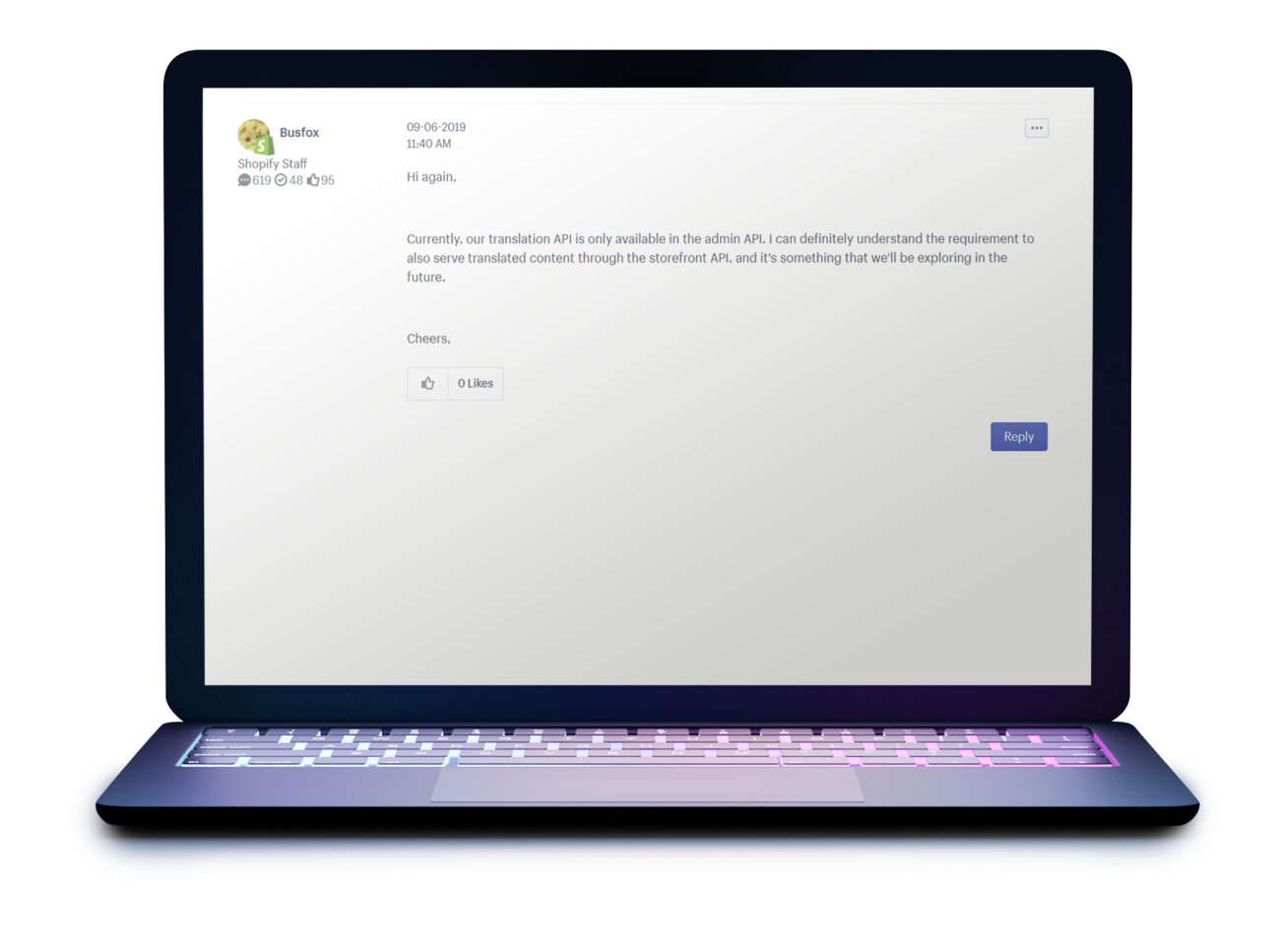If you want to implement a business idea immediately, SaaS is a real lever: It has never been easier to implement executable prototypes in record time in the shortest possible time. Whether it’s Wix for landing pages, Shopify for eCommerce or Billomat for invoices: You can get started immediately, technical hurdles are reduced to a minimum. So why build your own infrastructure at all? We regularly get asked this question as a WordPress agency. A simple counter question exposes the problem with SaaS: Can you handle no?
Blocker #1
You need a new function
When booking SaaS, you will not receive a service, but a product.
You will notice the difference at the latest when you miss a function – and an implementation is simply impossible.
Make no mistake about it: It doesn’t matter how simple or complex your requirement is – you are at the mercy of the service provider. However, when it comes to new functions, this person not only has your requirements in mind – but also those of all other customers. An adaptation of the software usually means that it must be just as meaningful and correct for all other customers.

Much more often, however, you will receive a rejection directly or only the answer that your request will be gladly accepted, but no confirmation has yet been given as to when it will be implemented.
Regularly, nothing happens for years and then it is not implemented – as was the case with our feature request to Billomat. From the platform operator’s point of view, this is perfectly fine and, considering the price/performance of many SaaS, acceptable in most cases.
So if you can handle a maybe someday or no and are more willing to change your business processes or product requirements when in doubt – then all is well.
With custom software development, you usually don’t have that problem – you, as the client, set the priorities and critical requirements are implemented.
Blocker #2
SEO & PageSpeed
They have a picture-perfect website, but no visitors. They have a lot of visitors, but they don’t walk. Time for SEO & PageSpeed optimization
An extensive analysis of your SEO agency or web agency gives you clear recommendations for action and it quickly becomes clear: The selected SaaS offers you hardly any opportunities.
Quickly create slow websites.
Because most SaaS website builders want to impress above all with a rich feature. It is not the optimal technologies that are chosen for you, but those that work as stable and error-free as possible on millions of websites.
They usually have no influence on which browsers are supported, how fast the website finally loads and whether they represent real SEO blockers.

For example, for years it was impossible to set up multilingual shops in Shopify, which are also correctly recognized by Google.
Multilingualism was simply not provided for, then only possible in the admin area and after years from 2020 then finally also for the frontend.
Until then, Shopify had to live with crude Javascript solutions that inserted the translation when it accessed the website.
This was catastrophic from an SEO point of view – the only thing missing was the unsubscribe button to completely deregister the store from Google.
Blocker #3
Service terminated
Has the carpet ever been pulled from under your feet? That’s what it feels like when a critical business application is shut down and set to soundless.
Whether Google buys and closes the SaaS service just to put the developers on their own products or continued operation is simply no longer economical: As a customer, you are now usually alone.
Not only do they have to find suitable alternatives, adapt their process to them and migrate their data, sometimes at great expense – if at all possible. They also have limited time.
In the worst case scenario, the SaaS servers are shut down overnight or a function that is important to you is simply removed – you can then do nothing.

Too Big to Fail? There is no such thing in IT!
MySpace incessantly deletes 50 million songs and destroys an important cultural history.
Facebook removed over 1,000 ad options because they were underutilized – some highly optimized ad campaigns immediately became worthless.
Google discontinued the powerfully pushed social network Google+ and over 40 other services.
There are many reasonswhy SaaS startups fail, but in addition to the cheers, the news about the billion-dollar graves of unsuccessful startups often goes under.
Prepare for the worst case scenario at SaaS as well! How prepared are you through backups and interfaces if a critical service is terminated overnight or only a short period of time remains for a change?
Of course, not all risks can be eliminated and the use of SaaS certainly makes sense in many cases – a solid SWOT analysis is also applicable to SaaS.
Blocker #4
Assets for whom?
Lean startups are in vogue: focus on the essentials, lean structures.
We celebrate the concept behind it, it rewards courage and demands short-term results – better than dying in planning beauty in the ivory tower.
Lean is not called Shallow.
But prototypes should eventually turn into real value for your company – ideally, this is how you build not only market knowledge, but also technology. Only then will you maintain your lead over the competition.
So it is important to switch from exploration to the exploitation phase for divisions that are already functioning. And that doesn’t just mean standardizing the processes and increasing their efficiency and quality. But rather to bring data and structures back into the company – as completely as possible.

An offer you might want to decline.
When using SaaS, you are not the master of your data and structures, not even of your processes – everything is up to the SaaS providers.
They have complete insight into your stored data, structures and processes are even specified.
Amazon shows what this can mean in the specific case. With full access to sales statistics, Amazon recognizes trend products at an early stage, produces them and offers them as its own brand.
For Amazon Marketplace sellers, Amazon has regularly proven to be a pact with the devil – for example, when sales volume skyrockets.
Blocker #5
privacy
SaaS means that you get a product “as is”. When it comes to data protection, this regularly means grey areas or real violations, against which you usually can do nothing except wait or change the service.
Here, too: As a startup, you don’t read some legal requirements quite as conservatively as you would as a multinational corporation and just use the SaaS first and hope that you won’t be checked too closely by a data protection officer.

In the end, however, you are playing with fire, because if a SaaS does not fully comply with the GDPR, you also have a legal problem:
You could face fines of up to 4% of your annual global turnover or up to €20 million – whichever is greater.
At the same time, the recommendation is to invest a similar share of sales annually in IT budgets, i.e. in the development and maintenance of your own technology.
Then it would be better to build up assets than to have to fear penalties.
There is no such thing as absolute security, and in the end, success proves the software as a service providers right – but only for a time.
After all, in most cases only real processes are digitally mapped – no more and no less. A SaaS solution that is right for you now may no longer fit tomorrow or endanger the existence of your company.
It is therefore important to have a balanced technology mix that enables agile prototyping and ensures high cost/benefit efficiency.
Don’t underestimate the value of building company-specific technology for you. For the exploration phase and for non-critical applications, continue to use SaaS where it benefits, but make yourself independent as early as possible.
As a web agency, we advise you holistically. We find solid shortcuts through SaaS and at the same time support you in building your own technology in your company.
